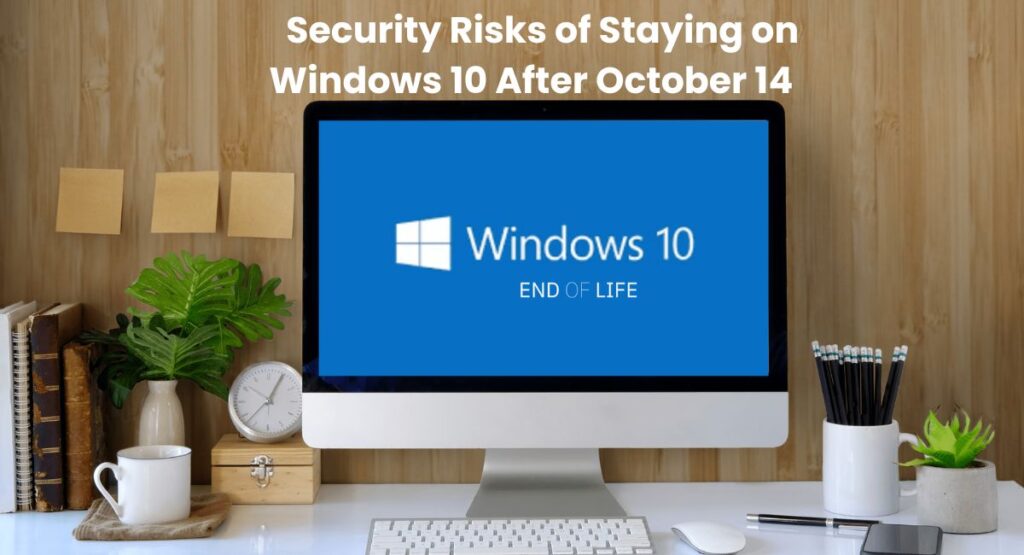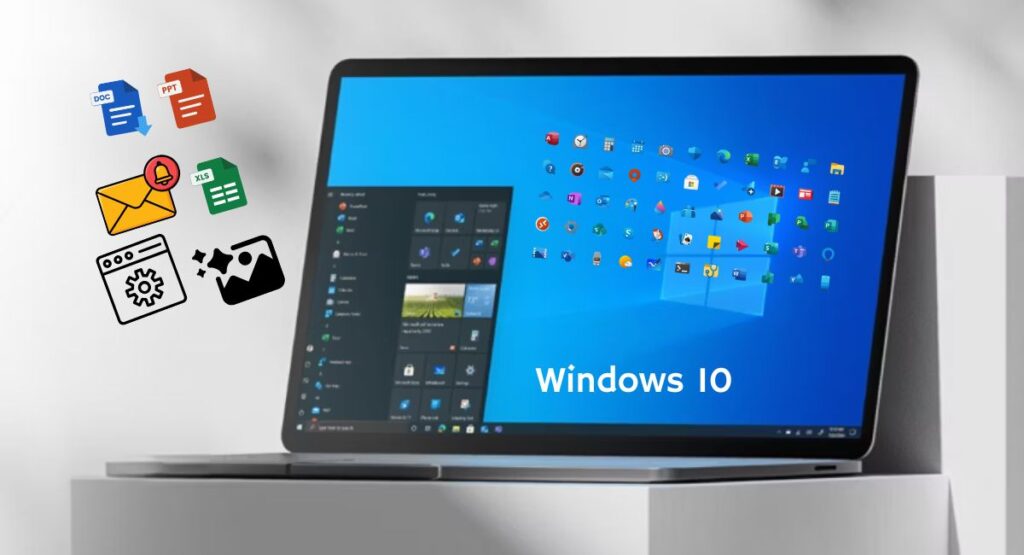October 15, 2025
Millions of computer users worldwide are now exposed to growing Windows 10 security risks as Microsoft officially ends support for the operating system.
The company stopped providing updates, bug fixes, and security patches on October 14, 2025, leaving nearly 600 million devices potentially vulnerable to new cyber threats.
For many, this marks the end of an era — and the beginning of a risky one.

A Global Security Shift
The cutoff means Windows 10 systems will no longer receive protection against newly discovered vulnerabilities.
That’s a serious Windows 10 security risks, experts warn, especially as hackers rush to exploit unpatched flaws.
According to BleepingComputer, Microsoft confirmed that no more security updates will be issued, not even for critical vulnerabilities.
The company instead urges users to upgrade to Windows 11 or join the Extended Security Updates (ESU) program for a limited time.
But the transition hasn’t been smooth for everyone.
Many users still rely on older hardware incompatible with Windows 11’s strict requirements, such as TPM 2.0 and Secure Boot.
As a result, millions are stuck running an unsupported system — a perfect storm for rising Windows 10 security risks scenarios.
Experts Sound the Alarm
Cybersecurity researchers say the next few months could see a surge in malware attacks targeting Windows 10 users.
With no new patches, every new exploit discovered will remain open indefinitely.
“Unsupported systems are soft targets,” said Jake Moore, global security advisor at ESET.
“We’ve seen this pattern after Windows 7 support ended — attackers move fast to take advantage of outdated software.”
The same pattern is now repeating.
Reports from TechRadar and Windows Central highlight growing concerns among IT professionals who maintain corporate systems still dependent on Windows 10.
The Windows 10 security risks extends beyond home users — hospitals, schools, and government offices are also at risk if they delay migration.
Microsoft’s Limited Lifeline
In an effort to ease the transition, Microsoft introduced a Consumer ESU plan — a paid option providing one more year of updates.
However, it’s a temporary fix, not a long-term solution.
Even with ESU, the underlying issue remains: once updates end entirely, the Windows 10 security risks will increase sharply.
Microsoft’s official statement reminds users that unsupported systems “will be more vulnerable to security risks and viruses.”
Still, many users are hesitant to upgrade, citing cost, software compatibility, and personal preference.
For a detailed breakdown of Microsoft’s timeline and its impact, see our earlier report:
👉 Windows 10 Support Ends October 14, 2025: What This Means for Your PC Security Now.
This interlinked coverage adds context on how the end-of-life announcement unfolded and why users are now scrambling for answers.
Why People Still Won’t Move On
It’s not just nostalgia keeping people on Windows 10.
Some older PCs run perfectly fine, and users see no reason to upgrade hardware just to install Windows 11.
For small businesses, replacing multiple systems is expensive and disruptive.
But experts warn that refusing to move on could become costlier in the long run due to potential breaches and data loss.
The Windows 10 security risks doesn’t only mean malware infections.
It includes ransomware, phishing exploits, and data theft — all of which thrive on outdated operating systems.
According to a StatCounter report, nearly 59% of Windows PCs worldwide were still using Windows 10 as of September 2025 — making it a prime target for cybercriminals.
Hackers Already Eyeing Vulnerabilities
Security analysts predict that hackers will soon reverse-engineer recent patches made for Windows 11 to locate similar flaws in Windows 10.
This tactic — known as “patch diffing” — helps attackers identify weak spots that Microsoft no longer fixes.
In practical terms, this means every new Windows 11 update may indirectly reveal new Windows 10 security risks points.
The window for exploitation grows wider each week that users delay upgrading.
External security outlets like The Verge and Tom’s Hardware report similar concerns, emphasizing that unsupported PCs could become “digital liabilities” by early 2026.
A Turning Point for PC Users
The end of Windows 10 support marks one of the largest software transitions in recent history.
For users, it’s not just a product change — it’s a reminder that digital safety depends on staying current.
Ignoring the Windows 10 security risks might save money today, but it could cost much more if personal data or business systems are compromised.
Whether upgrading, switching to another OS, or using ESU as a temporary fix, one fact remains clear — the clock has run out for Windows 10.
FAQs: Windows 10 Security Risks
1. What happens now that Windows 10 support has ended?
Microsoft officially ended support for Windows 10 on October 14, 2025.
This means no more security updates, patches, or technical support will be provided.
As a result, your computer becomes more exposed to viruses, malware, and other Windows 10 security risks.
2. Can I still use Windows 10 safely after 2025?
You can technically keep using Windows 10, but it’s not safe for long-term use.
Without updates, every new vulnerability discovered will remain unpatched.
Experts recommend upgrading to Windows 11 or subscribing to Microsoft’s Extended Security Updates (ESU) program for temporary protection.
3. What is the Extended Security Updates (ESU) plan?
The ESU plan is a paid program from Microsoft that provides critical updates for a limited time after the end of support.
It’s meant as a short-term bridge for users who need more time to upgrade.
However, once ESU expires, the Windows 10 security risk will rise again.
4. What are my options if my PC can’t run Windows 11?
If your hardware doesn’t meet Windows 11’s requirements, you can:
- Join the ESU plan for temporary protection.
- Consider installing a lightweight Linux distribution for basic tasks.
- Or upgrade your device to ensure ongoing security support.
Ignoring upgrades could leave your system open to serious Windows 10 security risks in the coming months.

